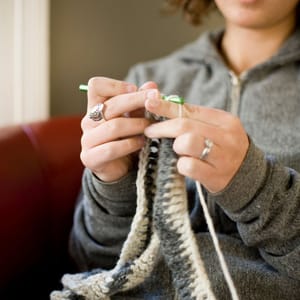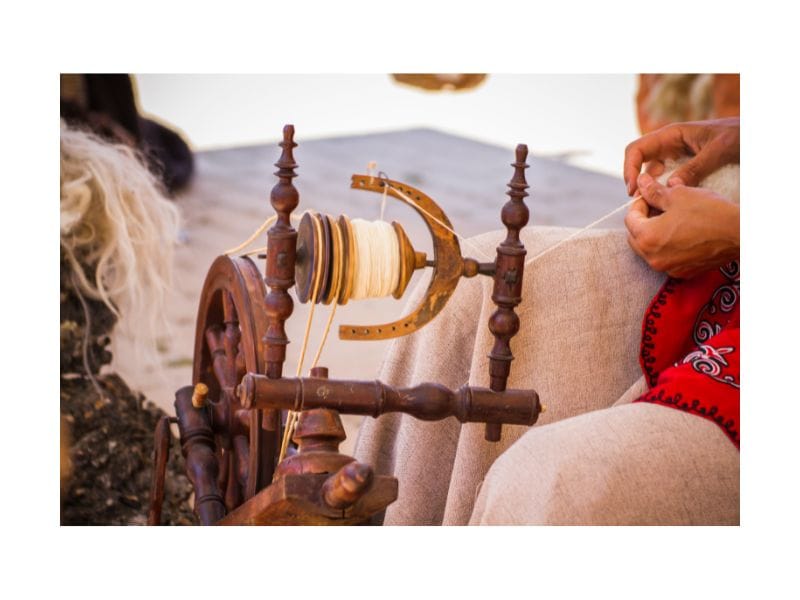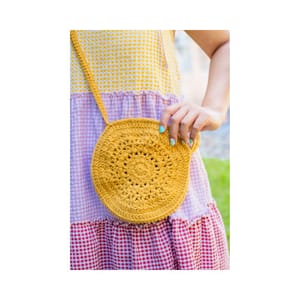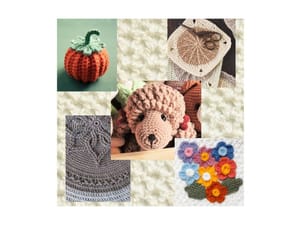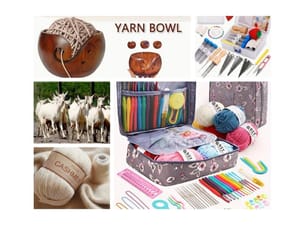In the world of textiles, the term Yarn Spinner has a special meaning as both an old craft and a new hobby.
But you may be wondering, "Is spinning yarn difficult to do?
And if you’ve ever wondered how the sweater you’re wearing or the tapestry on your wall were made, it all starts with the magic of yarn spinning.
Let’s spin some wool together and find out what makes a Yarn Spinner an important part of the textile world.

What is Yarn Spinning
Definition: A yarn spinner is a person or machine that turns raw fibers into yarn. This is the process of twisting fibers like wool, cotton, or synthetic materials into a continuous thread that can then be used for knitting, weaving, or crocheting.
The Process: Yarn spinning starts with the selection of fibers, then they are cleaned and carded to align them.
What is Carding Wool?
Carding wool is the fluffy stuff before spinning!
Carding wool is an important step in preparing raw wool fibers for the process of spinning the wool fibers into yarn.
This involves using a pair of hand carders or a drum carder to brush and align the fibers, removing any tangles, debris, and impurities like sheep 💩 poop, so all fibers are aligned in the same direction.
The result is a soft, fluffy batt of wool (roving) that looks like a cloud, making it easier to spin into yarn.
Carding not only smooths out the fibers but also blends them so you can create consistent yarns.
Then, the fibers are drawn out and twisted, either by hand or with a spinning wheel, to create yarn. The yarn's thickness, texture and strength, can be adjusted during the spinning process to produce many different types and thickness of yarn.

Types of Yarn Spinning
Drop Spinning: One of the oldest methods, this is done with a simple tool called a drop spindle. The spinner uses gravity to twist the fibers as the spindle spins, to create yarn. It’s portable, cheap and a great way to start learning the craft of spinning.

Wheel Spinning: This is a more advanced method; wheel spinning uses a spinning wheel to spin yarn faster. The wheel gives you more control over the yarn and can produce more yarn in less time - so you get to porjects sooner!

Electric Spinning: For those who want a modern twist, electric spinning machines do the work for you, faster and with less effort. This method is great for producing large quantities of yarn quickly.

The Benefits of Yarn Spinning
Creativity and Customization: Yarn spinning has endless options. Spinners can blend different fibers, try different colors and create different textures to produce one-of-a-kind yarns for specific projects.
Sustainability: By spinning yarn, you can choose eco-friendly fibers and reduce your reliance on mass-produced materials. This supports sustainable practices and gives you control over the quality and origin of the materials used.
Mindfulness and Relaxation: Spinning can be meditative, calming, and focused. Many spinners find it therapeutic, a break from the daily grind.

Start Yarn Spinning
Tools and Materials: To start spinning you’ll need a spindle or spinning wheel and some fibers of your choice. Many beginners start with wool as it’s easy to work with.
Learning Resources: There are many resources for would be yarn spinners, online tutorials and workshops, local spinning groups and classes. Joining a community of other spinners, or a fiber festival, can be very helpful and inspiring.

Try Yarn Spinning
Yarn spinning is more than a craft, it’s a journey into the heart of textile creation.
Whether you like the feel of the fibers or the joy of creating something beautiful and useful, spinning yarn will open up a world of possibilities for you.
So, go for it! You might just find your new favorite hobby.

Images Courtesy of Canva

